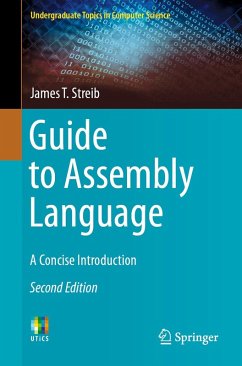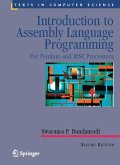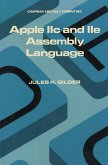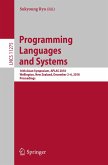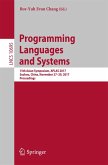This concise guide is designed to enable the reader to learn how to program in assembly language as quickly as possible. Through a hands-on programming approach, readers will also learn about the architecture of the Intel processor, and the relationship between high-level and low-level languages.
This updated second edition has been expanded with additional exercises, and enhanced with new material on floating-point numbers and 64-bit processing.
Topics and features:
A must-have resource for undergraduate students seeking to learn the fundamentals necessary to begin writing logically correct programs in a minimal amount of time, this work will serve as an ideal textbook for an assembly language course, or as a supplementary text for courses on computer organization and architecture. The presentation assumes prior knowledge of the basics of programming in a high-level language such as C, C++, or Java.
Dr. James T. Streib is Professor Emeritus of Computer Science at Illinois College, Jacksonville, IL, USA. His other publications include the Springer textbooks Guide to Data Structures and Guide to Java.
This updated second edition has been expanded with additional exercises, and enhanced with new material on floating-point numbers and 64-bit processing.
Topics and features:
- Provides guidance on simpli¿ed register usage, simpli¿ed input/output using C-like statements, and the use of high-level control structures
- Describes the implementation of control structures, without the use of high-level structures, and often with related C program code
- Illustrates concepts with one or more complete program
- Presents review summaries in each chapter, together with a variety of exercises, from short-answer questions to programming assignments
- Covers selection and iteration structures, logic, shift, arithmetic shift, rotate, and stack instructions, procedures and macros, arrays, and strings
- Includes an introduction to floating-point instructions and 64-bit processing
- Examines machine language from a discovery perspective, introducing the principles of computer organization
A must-have resource for undergraduate students seeking to learn the fundamentals necessary to begin writing logically correct programs in a minimal amount of time, this work will serve as an ideal textbook for an assembly language course, or as a supplementary text for courses on computer organization and architecture. The presentation assumes prior knowledge of the basics of programming in a high-level language such as C, C++, or Java.
Dr. James T. Streib is Professor Emeritus of Computer Science at Illinois College, Jacksonville, IL, USA. His other publications include the Springer textbooks Guide to Data Structures and Guide to Java.
Dieser Download kann aus rechtlichen Gründen nur mit Rechnungsadresse in A, B, BG, CY, CZ, D, DK, EW, E, FIN, F, GR, HR, H, IRL, I, LT, L, LR, M, NL, PL, P, R, S, SLO, SK ausgeliefert werden.
From the reviews:
"The well-organized book is divided into ten chapters and five appendixes. The ten chapters follow a fairly standard layout for a book on this language, with each chapter concluding with a summary section and an appropriate set of exercises ... . Summing Up: Recommended. All readership levels." (J. Beidler, Choice, Vol. 49 (2), October, 2011)
"It teaches assembly language with precision and verve, and it also provides the reader with some understanding of the computer architecture that drives assembly language. ... This book is an excellent text for a course in assembly language programming, and for programmers who want to understand the low-level operations and constructs that underlie high-level languages. Its attention to machine issues also makes it suitable as a supplemental text in a course on computer operations or architecture." (Marlin Thomas, ACM Computing Reviews, August, 2011)
"The well-organized book is divided into ten chapters and five appendixes. The ten chapters follow a fairly standard layout for a book on this language, with each chapter concluding with a summary section and an appropriate set of exercises ... . Summing Up: Recommended. All readership levels." (J. Beidler, Choice, Vol. 49 (2), October, 2011)
"It teaches assembly language with precision and verve, and it also provides the reader with some understanding of the computer architecture that drives assembly language. ... This book is an excellent text for a course in assembly language programming, and for programmers who want to understand the low-level operations and constructs that underlie high-level languages. Its attention to machine issues also makes it suitable as a supplemental text in a course on computer operations or architecture." (Marlin Thomas, ACM Computing Reviews, August, 2011)

